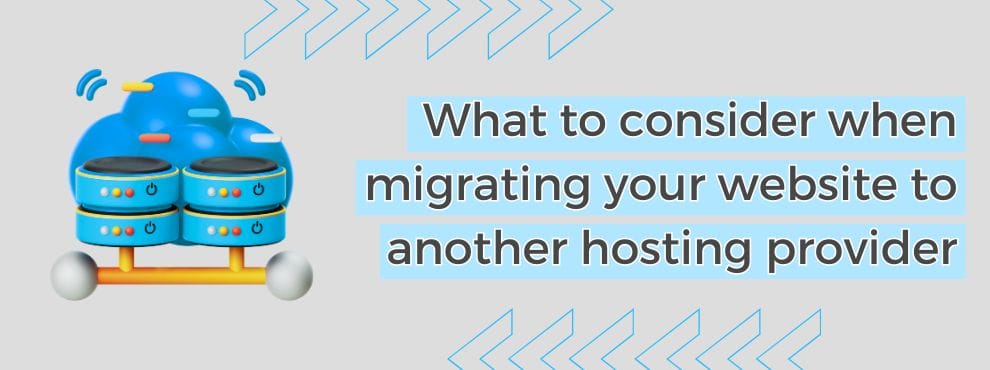Migrating a website to another hosting provider is a strategic decision that can bring multiple benefits, from faster loading speed to better technical support. However, this process can also become complex if not properly planned. At IDX Innovadeluxe, specialists in digital marketing solutions and online store creation, we understand that a successful migration requires not only technical knowledge, but also a clear strategy. In this article, we will guide you through the most important aspects to consider before, during and after migrating your website.
Table of contents
Pre-migration assessment
Before starting any type of migration, it is essential to perform a detailed analysis of your website and current needs. Ask yourself why you want to change hosting: Are you experiencing slow loading times, is the technical support not responding to your needs, are the costs too high for what you are getting in return? Having clear answers to these questions will allow you to better choose your new provider.
In addition, it is essential to make a complete inventory of your site: plugins, scripts, databases, software versions, and any external integration. This will not only make the migration easier, but will give you a better overview of what you need to optimize or upgrade.
Choosing a new hosting provider
Not all hosting services are the same. Some specialize in online stores, others in blogs or corporate sites. That’s why you should make sure that the new provider is perfectly suited to the characteristics of your project.
Check aspects such as:
- Guaranteed performance and uptime.
- Scalability capacity according to the growth of your business.
- Security policies and backup frequency.
- Accessibility to technical support and 24/7 availability.
- Ease of management through panels such as cPanel or Plesk.
It is also advisable to research opinions and experiences of other users, especially if you have an online store that needs to be active without interruptions.
Make a complete backup
Before moving a single file, you should perform a full backup of your website. This includes the database, server files, emails (if they are on the current hosting) and system settings.
This copy will be your lifeline in case something goes wrong during the migration. Make sure it is a working copy and that you can restore it without complications. It is also useful to keep several backup versions for safety.
Planning the timing of the migration
One of the most common mistakes when migrating a site is to do it in hours or days of high user traffic. This can result in lost traffic, interrupted sales and a poor user experience.
The ideal is to plan the migration during off-peak hours or even during the early morning, depending on the target audience of your website. It is also advisable to warn your users if you foresee that the site will be down for a few minutes or hours.
Technical migration process
Once you have the backup, you have chosen the new hosting and planned the best time, you can start the migration process. This includes several technical steps, such as transferring files via FTP, exporting and importing the database, and configuring the new environment to ensure compatibility.
During this process it is important to check that the file paths do not change, that the PHP and MySQL versions are compatible, and that all necessary modules or extensions are available on the new server.
Don’t forget to modify the DNS records to point to the new provider. This can take anywhere from a few hours to 48 hours to propagate, depending on the domain provider.
Testing before making the final switch
Before deactivating the old hosting, make sure that everything works correctly in the new environment. Perform extensive functionality tests: navigation, forms, checkout processes (if you have ecommerce), image loading, internal links, and more.
This step is crucial to ensure an error-free experience for your users. Many providers allow testing in temporary environments before launching the site to the general public.
Communicating with your audience
An often forgotten part of migration is communication. If you run an online store or blog with frequent readers, it is good practice to inform your users about the migration, its possible temporary effects, and the improvements it will bring.
This not only avoids confusion, but also reinforces the transparency and professionalism of your brand. Use your social networks, email newsletters or even an on-site notification to keep your audience in the loop.
Post-migration optimization
Once the migration is done, take the opportunity to make improvements. You can optimize load time with new cache settings, update plugins and themes, review technical SEO such as 301 redirects and URL structure, and even implement a CDN to improve content distribution.
It’s also a good time to review your analytics and make sure everything is tracking correctly. Make sure tools like Google Analytics and Search Console are running without errors.
Conclusion
Migrating your website to another hosting provider can be an excellent decision if done with proper planning. As you have seen, this process goes far beyond moving files: it involves analysis, strategy, testing and communication. At IDX Innovadeluxe, we help companies and entrepreneurs to perform efficient migrations, minimizing risks and maximizing benefits.
If you are thinking of changing hosting, don’t do it alone. Count on our team of experts for a safe and seamless migration, your website and your customers will thank you!




Deja un comentario